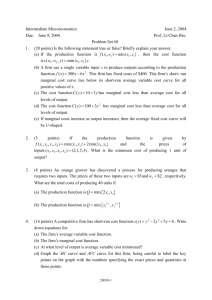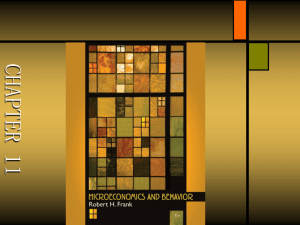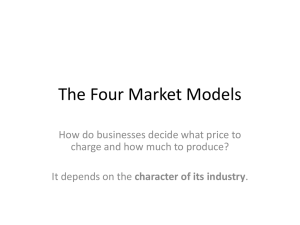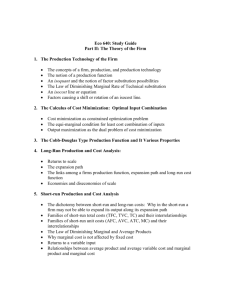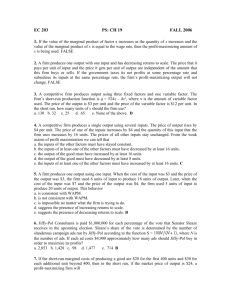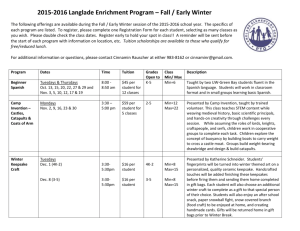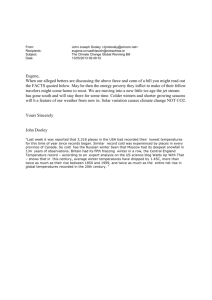Chapter_09_Micro_online_14e
advertisement
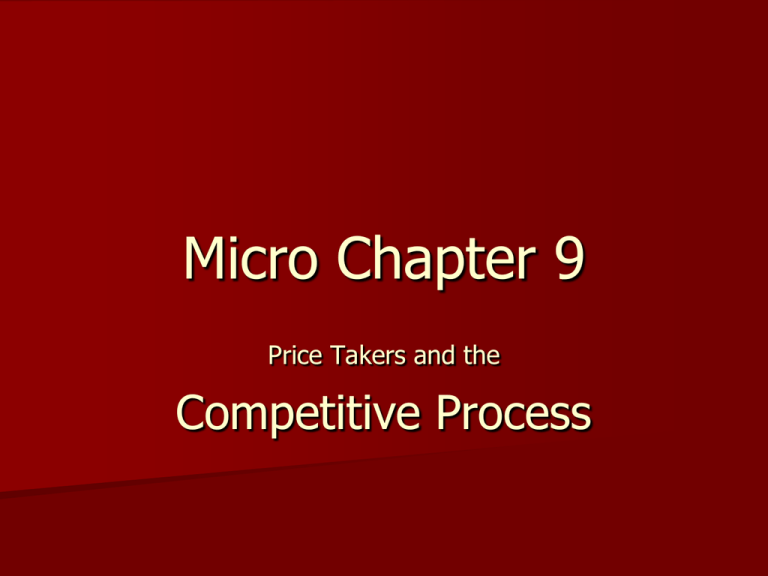
Micro Chapter 9 Price Takers and the Competitive Process 2 Learning Goals 1) Determine when a firm will temporarily or permanently go out of business 2) Explain the process of competition and identify the effects on consumers and producers “It is competition that drives down costs and prices, induces firms to produce the goods consumers want, and spurs innovation and the expansion of new markets…” President’s Council of Economic Advisors Price Takers and Price Searchers Skim this section Focus on “competition as a dynamic process” What are the Characteristics of PriceTaker Markets? A price taker must set price equal to the market equilibrium price because: 1) Each firm is small relative to the market 2) Each firm sells an identical product 3) There are many buyers in the market 4) No barriers to entry/exit exist How Does the Price Taker Maximize Profit? The firm’s decision is a two-step process: (1) Decide to open or close (2) If open, decide how much to produce (1) Decide to open or close Consider this scenario: – Fixed costs – Variable costs – Total revenue $20,000 $30,000 $40,000 Q 9.1 Fixed costs $20,000 Variable costs $30,000 Total revenue $40,000 If the firm closes, how much is profit? $20,000 2. $10,000 3. $0 4. -$20,000 1. Q9.2 Fixed costs $20,000 Variable costs $30,000 Total revenue $40,000 If the firm stays open, how much is profit? $20,000 2. $10,000 3. -$10,000 4. -$20,000 1. So, the decision rule for (1) is as follows: Close if the firm can’t pay variable costs More specifically, close if: (1) MR < AVC, or (2) TR < TVC (2) If open, decide how much to produce Continue to engage in an activity as long as the marginal benefit is greater than the marginal cost Specifically, keep producing as long as MR > MC Q9.3 When the marginal cost of a firm is more than the market price of its product, the firm should 1. expand output. 2. reduce output. 3. maintain output. 4. charge more than the market price. Q9.4 If an amusement park that is highly profitable during the summer months is unable to cover its variable costs during the winter months, which of the following would be the best alternative? 1. 2. 3. 4. raise its prices during the winter months. lower its prices during the summer months. operate during the summer, but shut down during the winter months. operate during all months of the year as long as its profits during the summer exceed its losses during the winter. Shut down rules: Close temporarily if you expect to cover variable costs in the near future Close permanently if you don’t expect to cover variable costs in the near future The Firm’s Short-Run Supply Curve The Short-Run Market Supply Curve Price and Output in Price-Taker Markets Skip these sections The Role of Profits and Losses Competition Promotes Prosperity Here are the main points I want you to understand 1) 2) 3) 4) Why economists like competition: Costs are reduced Prices are reduced Firms become more efficient and have a stronger incentive to innovate Resources are moved from unproductive areas to productive areas Watch video: Stossel Micro Clip 09WalMart, competition and cost control Q9.5 The dynamic process of competition 1. is hindered by the self-interest of business decision makers. 2. puts the profit motive of sellers to work for buyers. 3. conflicts with the interest of consumers when businesses pursue profit rather than the public interest. 4. will permit business decision makers to earn longrun economic profit unless they are regulated by government. Question Answers: 9.1 = 4 9.2 = 3 9.3 = 2 9.4 = 3 9.5 = 2




